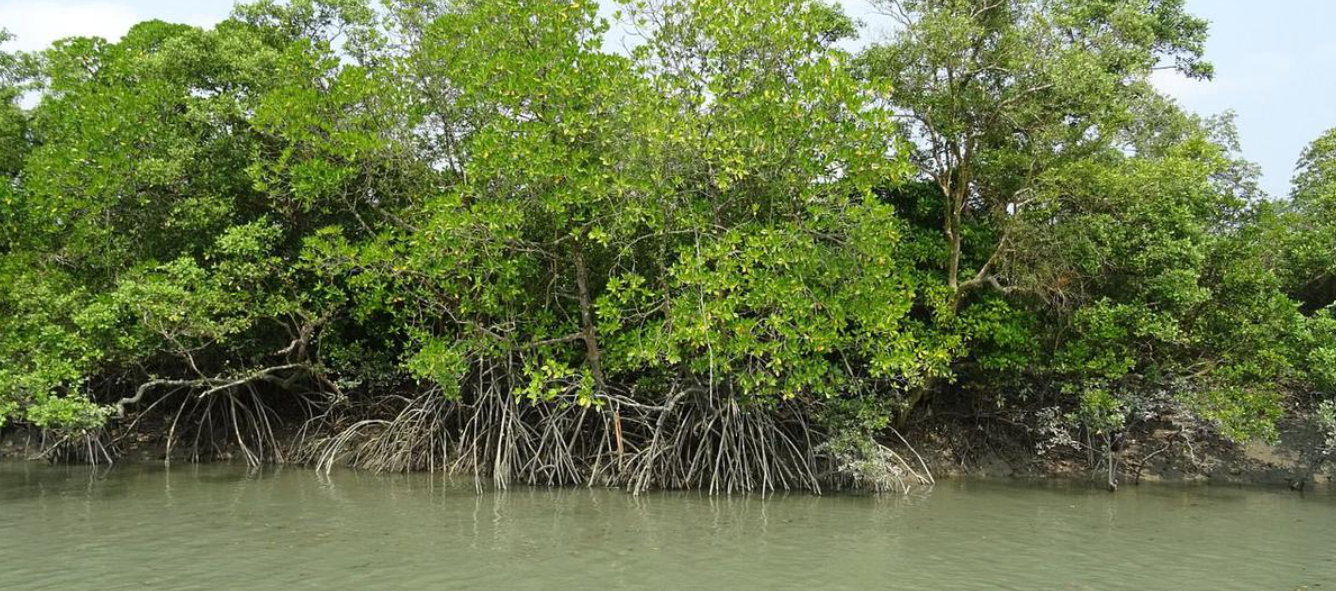Mangrove Conservation: Urgent Action Needed in South India and Sri Lanka (GS Paper 3, Environment)

Context
- Recent findings by the International Union for Nature Conservation (IUCN) have sounded a sobering alarm for coastal ecosystems in South India, Sri Lanka, and the Maldives, as mangroves in these regions face a dire threat, labeled as "critically endangered."
- This classification, unveiled in the IUCN's inaugural global assessment of mangrove ecosystems, underscores the urgent need for concerted conservation efforts to safeguard these vital habitats and the myriad benefits they provide.
Assessment Highlights
- The IUCN's comprehensive study, released on May 22, delves into mangrove ecosystems across 36 regions worldwide, spanning tropical, subtropical, and warm temperate coastlines.
- Notably, areas in South India, Sri Lanka, the Maldives, and the warm, temperate northwest Atlantic have been flagged as severely imperiled. Specific regions in South India, including Muthupet in Thiruvarur district, Ramanathapuram, and segments of southern Kerala, have been identified as particularly vulnerable.
Crucial Role of Mangrove Ecosystems
- Mangroves play a pivotal role in biodiversity conservation, providing essential goods and services to local communities while mitigating the impacts of climate change.
- These habitats serve as natural buffers, shielding coastlines from erosion and storm surges, sustaining fisheries, and purifying water bodies.
- Consequently, the loss of mangrove areas poses significant ecological and socioeconomic repercussions for both the environment and the livelihoods of coastal populations.
Conservation Endeavors in Tamil Nadu
- Despite the daunting challenges, there are glimmers of hope in Tamil Nadu's conservation landscape.
- The expansion of mangrove cover from 23 square kilometers in 2001 to 45 square kilometers in 2021, as reported by the Indian State of Forest Report, signals progress in restoration efforts.
- Encouraging community participation, the state has established 20 village mangrove groups to foster local stewardship and ensure sustainable utilization of mangrove resources.
- These initiatives, coupled with scientific interventions to optimize freshwater supply and enhance ecosystem management, underscore the proactive approach adopted to safeguard mangrove habitats.
Resilience through Restoration
- In the aftermath of natural calamities like Cyclone Gaja, concerted efforts have been launched to rehabilitate degraded mangrove ecosystems.
- The Tamil Nadu Coastal Restoration Mission, supported by the World Bank, has spearheaded the restoration of approximately 25 square kilometers of mangroves across several districts, with plans underway to reclaim an additional 15 square kilometers.
- These restoration endeavors aim to revitalize mangrove ecosystems, bolstering their capacity to support biodiversity and sustain local communities.
Conclusion
- The imperative to conserve mangrove ecosystems in South India and Sri Lanka underscores the pressing need for collaborative action, integrating scientific expertise with community engagement and sustainable management practices.
- As environmental challenges escalate, concerted efforts to safeguard critical habitats like mangroves are essential to ensure the resilience and well-being of coastal ecosystems and the communities reliant upon them.


